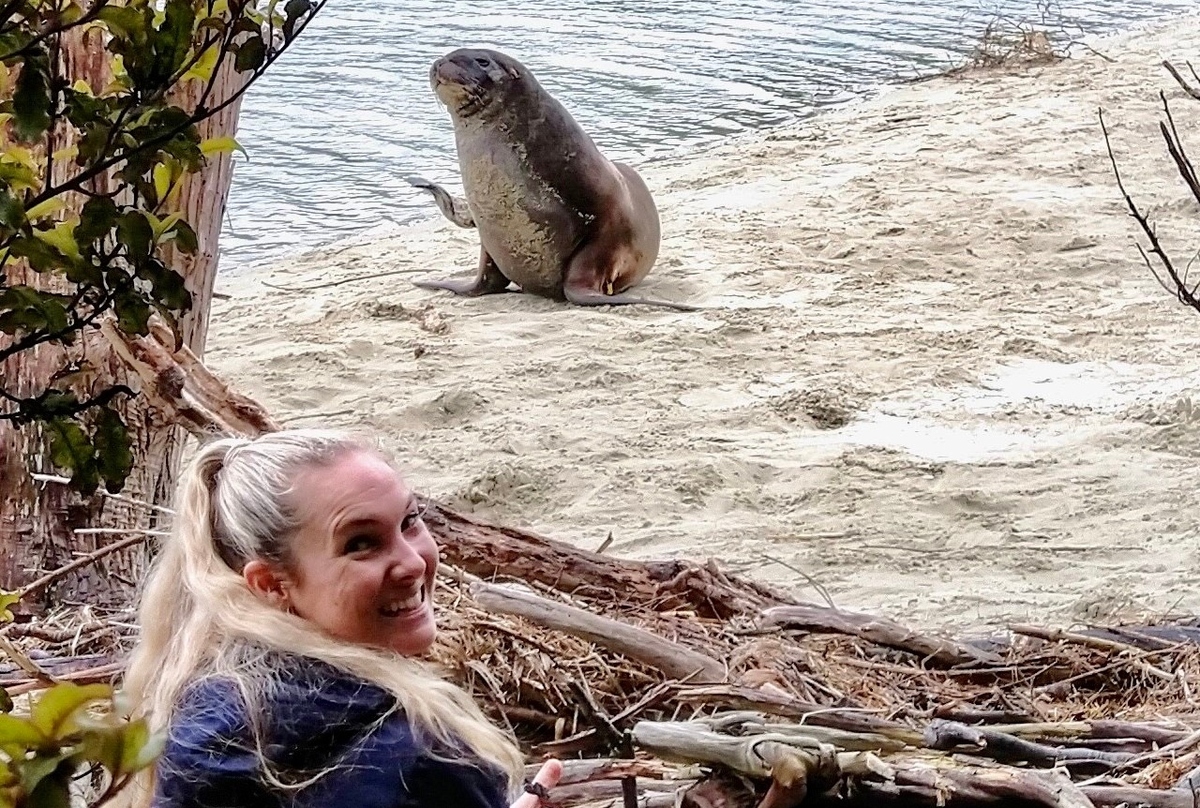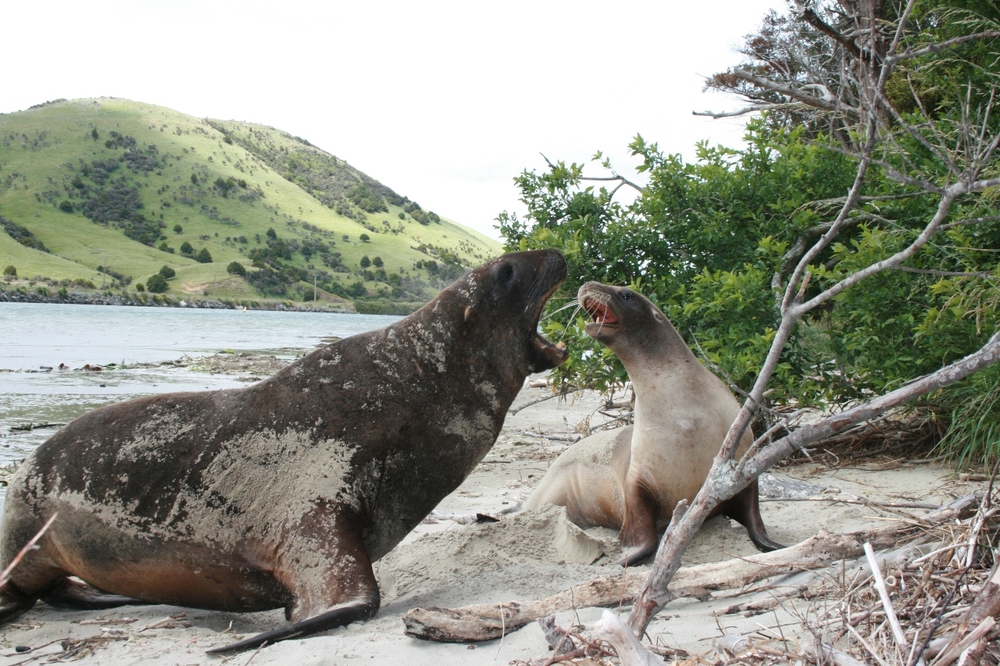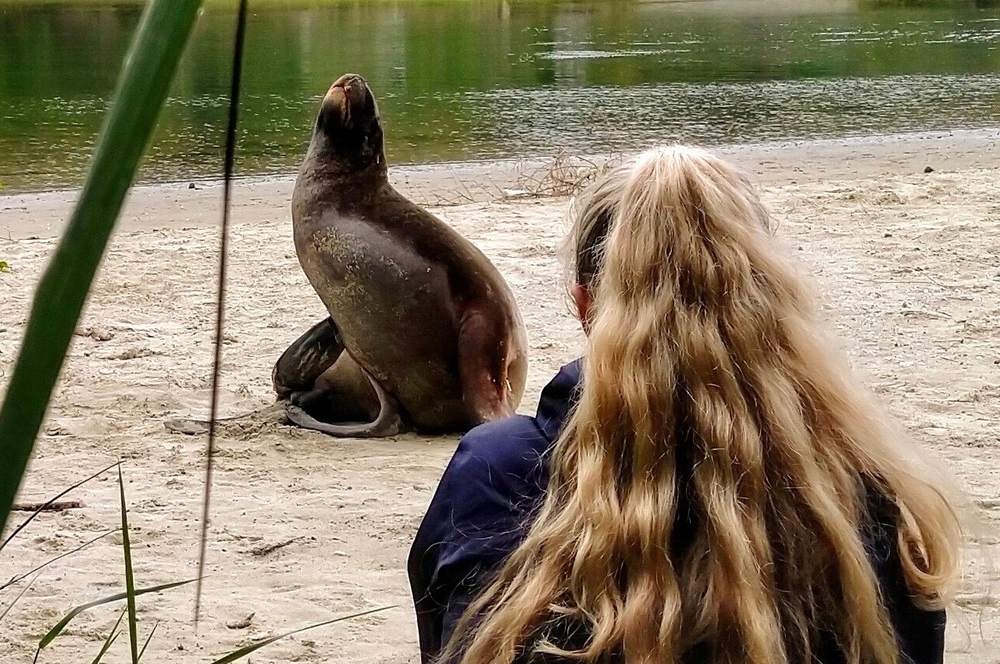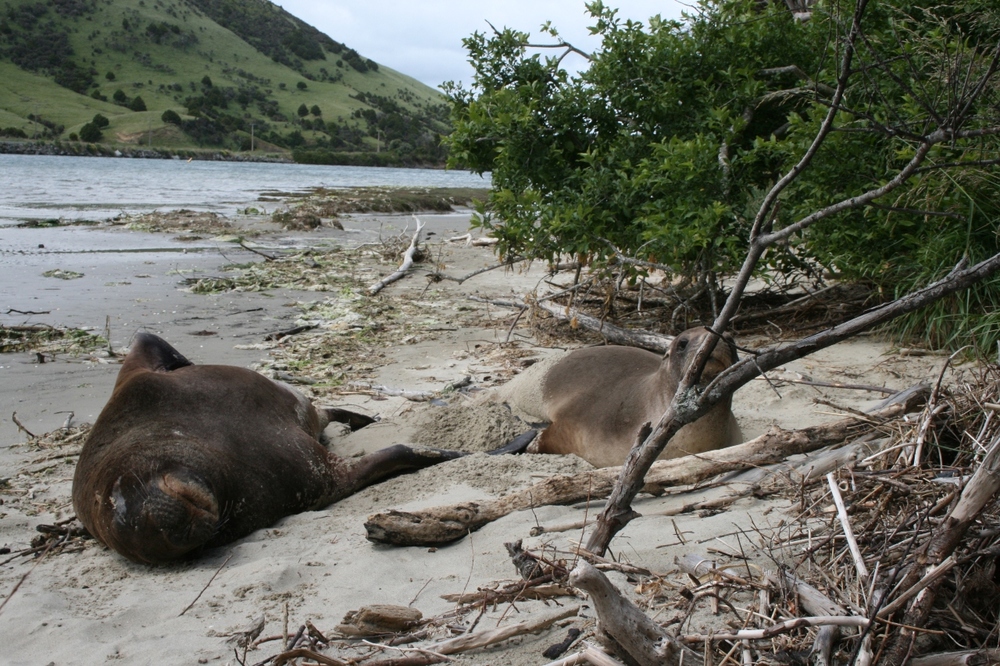Look out for the Sea Lions this summer
Lucy Henry
25 December 2020, 10:08 PM
 Sian Mair enjoys the company of a sea lion from a safe distance. PHOTO: Amanda Nally
Sian Mair enjoys the company of a sea lion from a safe distance. PHOTO: Amanda NallySummer in Southland and Otago signals the start of breeding season for New Zealand sea lions, but it also means the endangered species is more at risk of disruption from humans and threats to their population.
As hundreds of holiday makers flock to beaches in the Catlins, the animals can be put under stress and sometimes danger, says Sea Society founder Sian Mair.
Miss Mair, who founded the conservation group Sea Society two years ago, said the biggest threats to the sea lions are vehicles driving on beaches and human interference.
Advertisement
Advertise on the Southland App
The females need quiet, protected beaches to pup on each summer, she said.
But unfortunately, there have been “two known cases of sea lions being rammed [by cars],” she said.
Sea lions are an endangered species, and their population is declining.
There are only around 300 left on mainland New Zealand and they typically populate beaches in Otago, Southland, and Stewart Island.

Sea lions engage with each other on a Southland beach. PHOTO: Sian Mair
Professor of Wildlife Ecology Louise Chilvers, of Massey University, said of the sea lions left, only 100 are breeding females.
The females are the “bedrock of the population,” she said.
The species had just begun returning to mainland New Zealand after a 200-year absence, after being overharvested by sealers in the 19th century.
“Cars on beaches have been responsible for distress and separation of mother and pup pairs and just last year the death of a mother and pup pair on the road,” Prof Chilvers said.
New Zealand sea lions are philopatric, which means every summer, the adult sea lions return to the same beaches that they were born on to breed.
Male sea lions, called bulls, arrive in November and fight one another to defend their territory and form a harem.
Then the pregnant females, called cows, arrive in December, and give birth within one week of arrival.
Advertisement
Advertise on the Southland App
Miss Mair said approximately two weeks after giving birth, the females are ready to mate again.
“Their gestation period is approximately ten months. Females will spend the first year of their pups lives alternating between foraging trips at sea and periods on land suckling their pup,” she said.
The pups are dependent on their mothers.
Unlike fur seals, which live on rocky, often more secluded areas throughout New Zealand, sea lions live on beaches – which by their nature are a lot more accessible to people.
Because the females need quiet beaches to pup on, Miss Mair shared some advice for Kiwis to follow, to help keep our furry friends safe.

Ms Mair fell in love with sea lions after seeing them in the wild in Southland. PHOTO: Amanda Nally.
“Keep your dogs on leashes when in proximity to sea lions; this is primarily for your dog’s safety.
“If a sea lion raises its head, it has become aware of you, but is not feeling threatened.
“If a sea lion repeatedly raises its head at you, it's expressing concern about your presence.
“If a sea lion moves away when you approach it, it's trying to distance itself from you.
“If a sea lion opens its mouth directly at you, it's "gapping." It may bark or hiss at you. You are being told to back off.
“If a sea lion charges in your direction, back away and keep your distance," she said.

Sleeping sea lions. PHOTO: Sian Mair
Miss Mair said she first fell in love with sea lions when she moved to Southland to study Environmental Management at the Southern Institute of Technology.
After seeing the sea lions in the wild for the first time, she began advocating for their safety.
“They’re so magnificent,” she said.
Earlier this year, Ms Mair started a petition to the Clutha District Council and the Department of Conservation to restrict vehicle access on two beaches in the Catlins – Surat Bay and Cannibal Bay.
These two beaches are known to have higher numbers of sea lions living there and the beaches are not currently protected.
The change.org petition currently has over 3000 signatures.
ACTIVITIES & ATTRACTIONS
EVENTS


